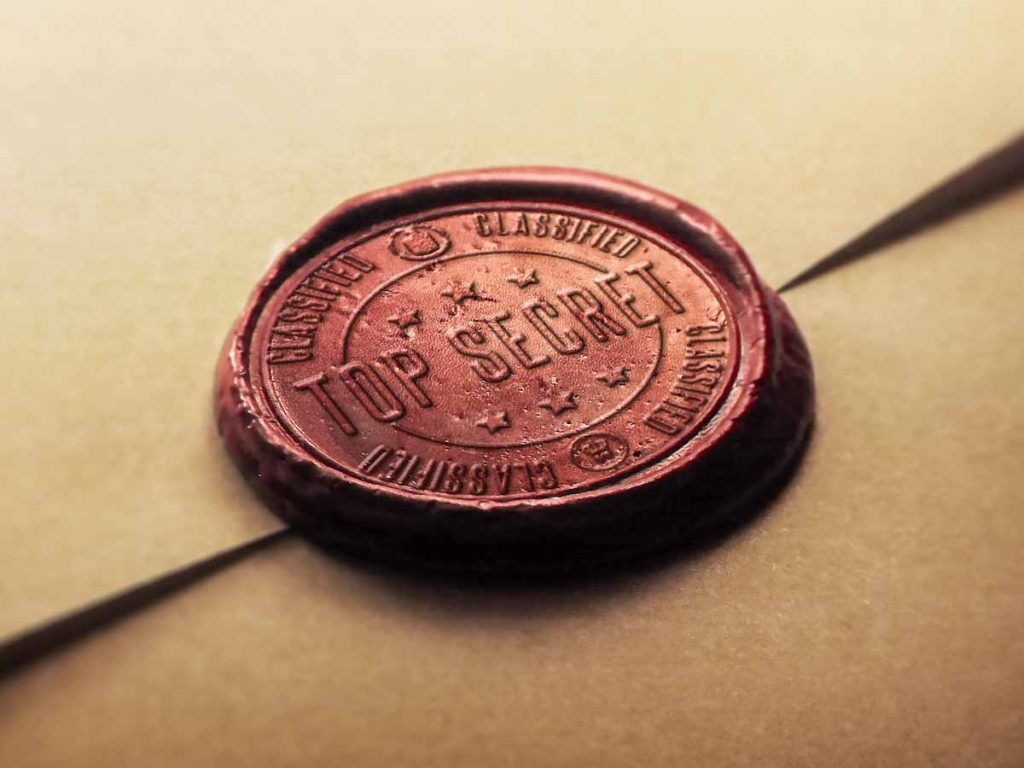
My boys are pretty good at playing together, but there are times they get bored and need a little inspiration. This becomes especially necessary on rainy days or when it’s just too dang hot or cold to go outside. This is a great time to introduce your kids to secret codes and ciphers.
One of my main goals as a dad is to add an extra layer of imagination to my kids’ play time (enough so that I decided to create a website about it). Instead of good guys/bad guys, how about secret agents and spies who need to pass secret codes to each other? Or if you’re really looking to up your dad-game, make some epic treasure hunts. Who wouldn’t want to live out their own National Treasure or Goonies adventure?
But what if your kids are really young? What are some secret codes you can start when they’re little? Here’s a list of secret codes and ciphers that are simple enough if you’ve just learned to read and write and can also add intrigue to their play.
1. A1Z26 Cipher (Number Code)
If you’re looking for a great starting place to teach secret codes to little kids, you can’t go wrong with the A1Z26 (also called a Number Code or Letter-to-Number Cipher). It’s a super easy substitution cipher, meaning the original message’s letters are substituted with another symbol. In the case of an A1Z26 cipher, each letter is replaced with the number corresponding to its place in the alphabet. So A=1, B=2, C=3, etc.

To teach your kids, you can simply write out the alphabet with its corresponding number. You can get fancier and get a decoder ring. Retroworks makes a really cool sliding A1Z26 decoder ring that’s worth checking out.
To learn more about the A1Z26 Cipher or to find some ideas for activities (including a free activity worksheet) check out A1Z26 Cipher (What it is and How to Teach Your Kids).
2. Caesar Cipher
The Caesar Cipher (sometimes known as a Caesar Shift, Caesar Substitution, Shift Cipher, or Rot-n Cipher) is another simple substitution cipher, except you replace the letters of the original message with another letter. To encode a message you shift each letter of the alphabet to a predetermined number of places, or rotations (ROT for short). For example, in a ROT-1 shift, the letter A becomes B, B becomes C, etc.
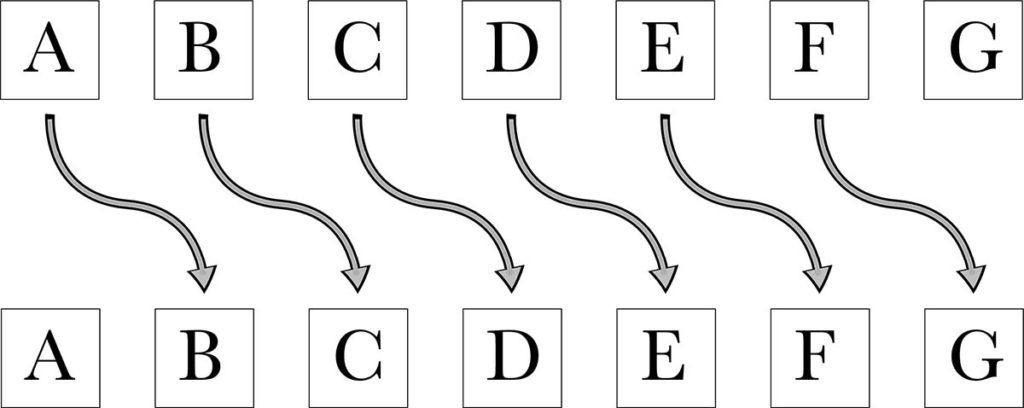
The Caesar Cipher is a higher level of encryption than the A1Z26 cipher because you now have 25 different possibilities for coding your message.
What makes this a great cipher for young kids is they don’t need to know any of the theory to be able to encode or decode messages. Simply hand them a cipher wheel and it’ll do all the work for them. A quick google search will reveal a couple of free Caesar Cipher wheels, or you can get my free downloadable pdf of a cipher wheel.
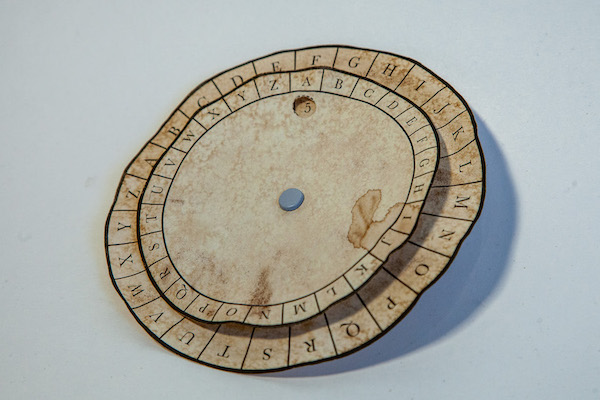
You can also take this cipher to the next level and start making some more epic treasure hunts. Simply make some clues or riddles and hide them around the house. Conveniently place the first clue and cipher wheel somewhere your kids can “discover” it themselves and watch as they play out their very own National Treasure adventure. I’ve even taken out the heavy lifting for you. Check out my Caesar Cipher Treasure Hunt and copy all my clues.
To learn more about the Caesar Cipher, check out The Caesar Cipher (What it Is and How to Teach Your Kids) which includes a downloadable cipher wheel.
3. Scytale Cipher
One of my personal favorite ciphers to teach young kids is the scytale cipher. It’s a simple transposition cipher which means all the letters for the original message are rearranged. The key to using a scytale cipher is a predetermined cylinder to encode and decode messages.
Start with a cylinder about 1/2 inch to 1 inch in diameter (smaller sizes work better with older kids that can write smaller). I personally like a 1/2 to 3/4 inch dowel, but a 1/2 inch piece of PVC pipe works really well too. Next, tape one end of a strip of paper to the cylinder and wrap the paper around without letting the paper overlap.

Write your message lengthwise across the cylinder, with one letter on each part of the paper. Use decoy letters to fill in the empty spaces.
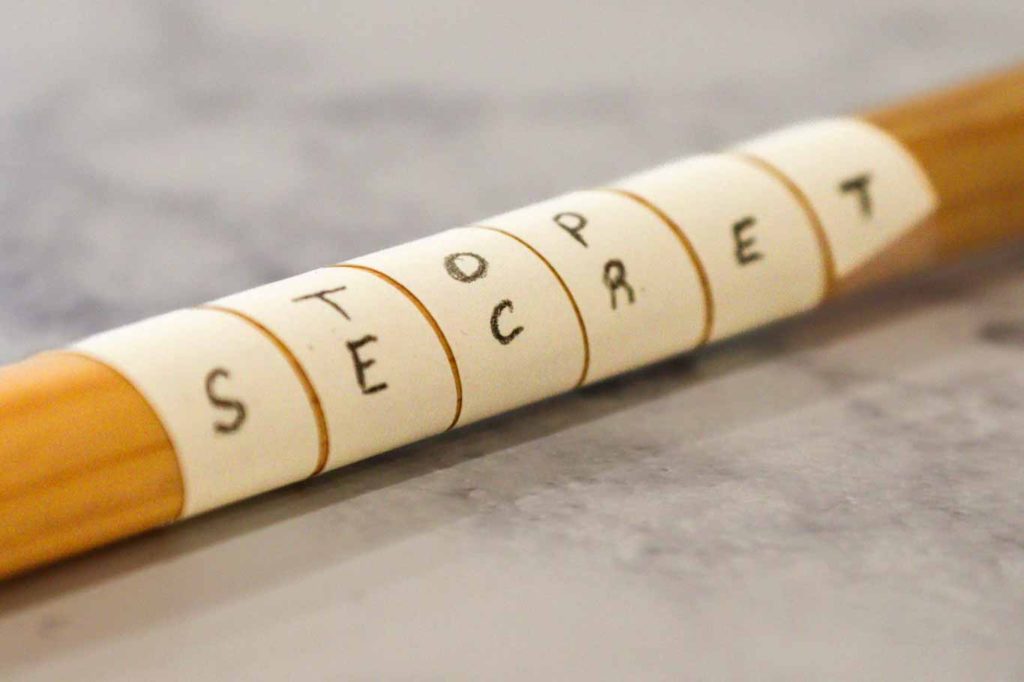
When you unroll the message, all the letters are mixed up. This is a great one for young kids because they can do a simple transposition cipher without needing to know how to do any of the theory. The cylinder does all the work for them!
To learn more, check out The Scytale Cipher (What It Is and How to Teach Your Kids) which includes a free downloadable worksheet!
4. Pigpen Cipher
The Pigpen cipher was my oldest son’s favorite cipher to learn. I think it was mostly because it looks like an alien language. So much so that I decided to “discover” a secret message in an intergalactic messaging tube in our backyard. It was from an alien who wanted to become penpals. (I’ve detailed exactly how you can do this yourself here: Become Penpals with an Alien (Pigpen Cipher Activity)
The Pigpen cipher (sometimes called a Masons’ Cipher, Tic-Tac-Toe Cipher) is another substitution cipher, but instead of replacing the letters with another letter, they’re replaced with symbols. Start by drawing out the following grids with the alphabet.
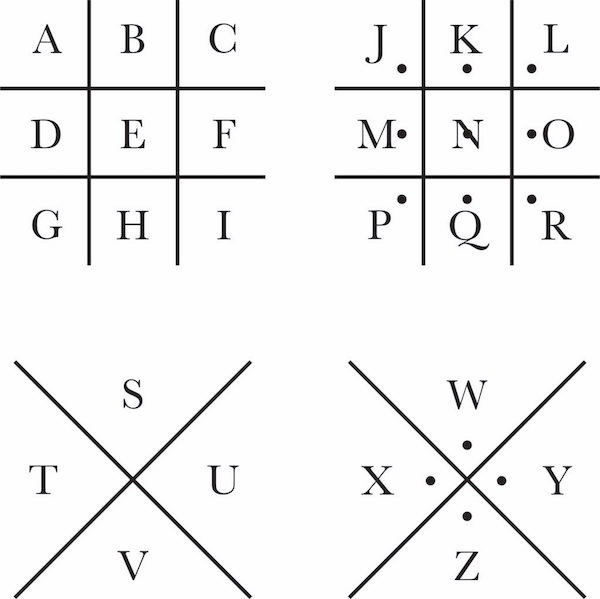
To encode, you’re going to take only the portion of the grid that has the original letter. So the alphabet will now look like this:

To learn more about the Pigpen cipher including a free downloadable worksheet, check out The Pigpen Cipher (What it Is and How to Teach Your Kids).
5. Atbash Cipher
The Atbash Cipher (sometimes called a Mirror Cipher or Reverse Alphabet) is a super easy secret code to teach your kids. Simply write out two alphabets, one written above the other. The top alphabet is written from A to Z, but the bottom alphabet is written backward from Z to A.

The Abash Cipher is one of the oldest recorded ciphers and has its roots in the Hebrew language. In Fact, the name Atbash is from the Hebrew alphabet. The first, last, second, and second-to-last letters are אתבש, which transliterates to alef, taw, bet, and shin, or Atbash.
To learn more about the Atbash Cipher and get some activity ideas to do with your kids, check out What’s an Atbash Cipher (Plus Fun Activities to Try!).
6. Morse Code
Morse code is fun to learn because 1. there’s a lot of history behind this code and 2. there are lots of methods to transmit messages. Morse code is a simple substitution ciphering in which letters are replaced with a series of dots and dashes. You can get much more complicated with numbers and punctuation, but I say keep it simple just the basic alphabet.
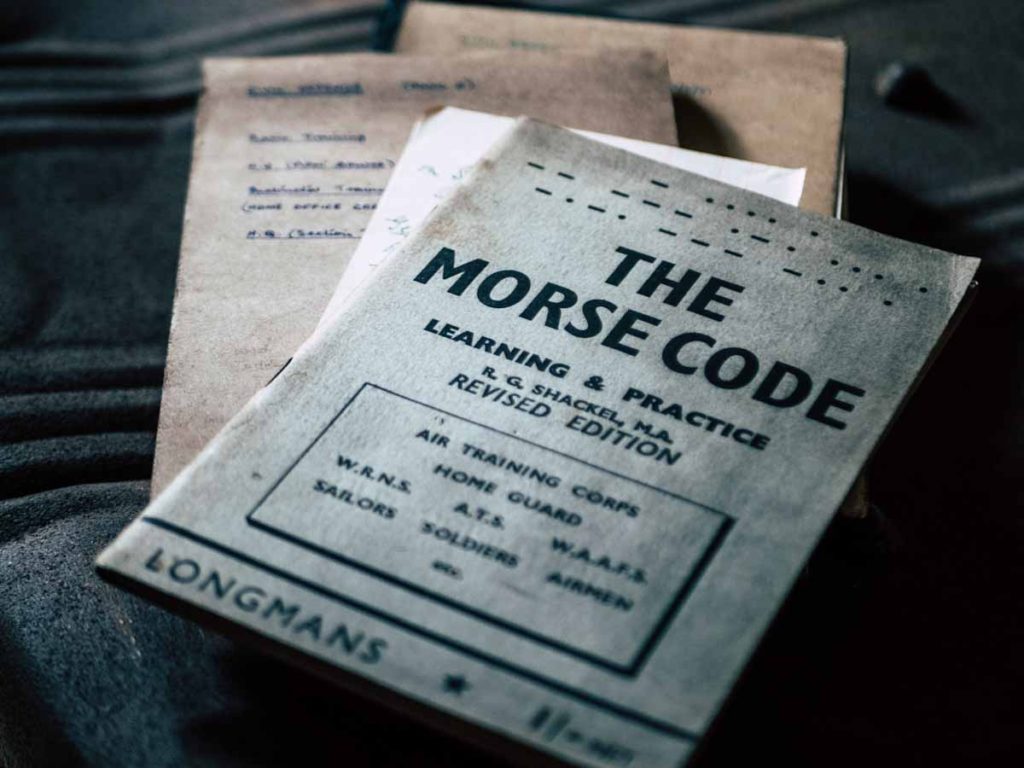
Check out https://cryptii.com for a free encoder if you’re looking for a shortcut to encode your messages. Just be warned that they will encode punctuation (I learned this one the hard way when my kids could not figure out one of the letters…).
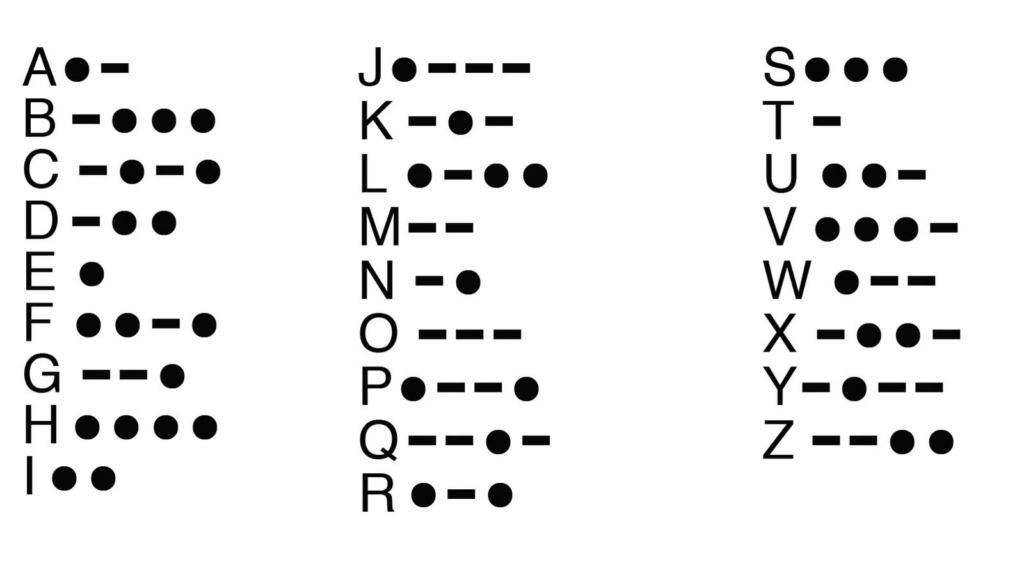
To send messages, you can use a flashlight, lanyard, wireless telegraph (Etsy makes a really cool STEM telegraph kit. This is not an affiliate. I just think it’s cool!), or a beaded garland (I used this for our Christmas Treasure Hunt).
You might also like these Treasure Hunt activities:
- Caesar Cipher Treasure Hunt Activity to Do with Your Kids
- A Christmas Treasure Hunt (For the Whole Family)
- Ottendorf Treasure Hunt Activity to Do With Your Kids
- Become Penpals with an Alien (Pigpen Cipher Activity)
- Book Cipher Treasure Hunt Activity to Do with Your Kids
Related Posts
Growing up, one of my favorite movies was The Goonies (probably like a lot of people). And as a kid, I wanted so badly to discover a secret treasure map in the attic that would lead to some “rich...
The Ottendorf Cipher (What it Is and How to Teach Your Kids)
It’s Friday night, which means it’s family movie night. On the roster for tonight’s entertainment: National Treasure. One of my favorite movies and the first time watching (of what I’m sure...
